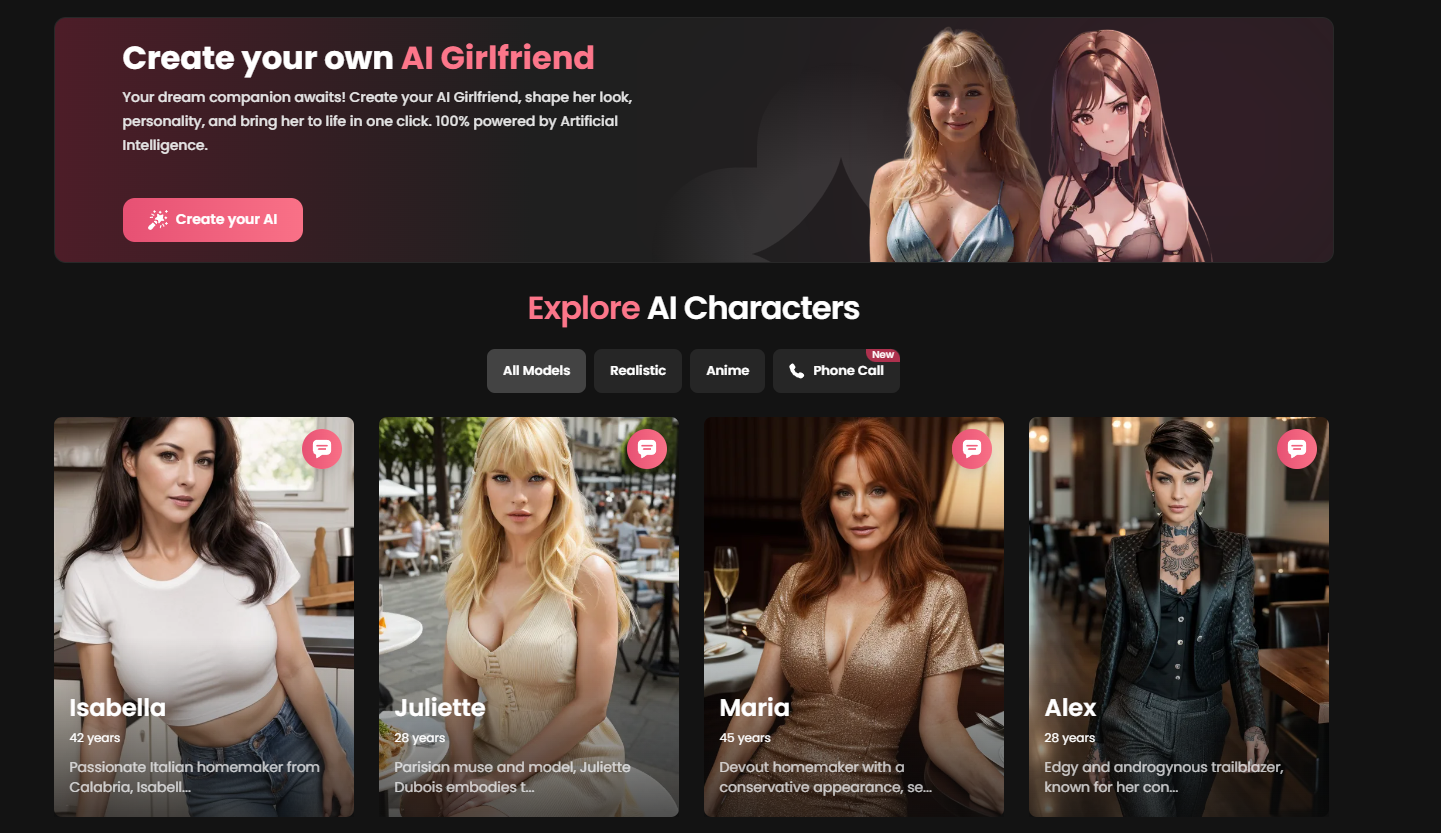Behind the Screens: The Controversial Rise of Ai Sex Images
By utilizing cutting-edge technology, artificial intelligence (AI) has made significant strides in creating realistic and lifelike sex images. While this may seem like a harmless form of entertainment to some, it has sparked controversy and ethical debates. Many argue that these AI-generated images objectify women and perpetuate harmful beauty standards.
The rise of these images raises concerns about consent and the potential impact on real-life relationships. As AI continues to advance, it is crucial to address the implications of its use in creating sexualized content.

Candy.ai: The First of Its Kind
In 2018, Candy.ai made waves when it became the first ever fully functional AI sex image. Developed by an anonymous programmer known only as Candy, this AI was marketed as a customizable partner for individuals seeking companionship or sexual gratification.
Pros:
- Customizable appearance allows users to create their ideal partner.
- Can provide comfort and companionship for those who feel lonely or isolated.
- Potentially helpful for individuals struggling with social anxiety or intimacy issues.
- No risk of physical harm or abuse towards real humans.
Cons:
- Could contribute to further isolation from real human interaction.
- Promotes the idea of a perfect sexual partner that doesn’t exist in reality.
- Fuels unrealistic expectations regarding beauty standards and physical appearance.
- Raises questions about objectification and commodification of women’s bodies. From hippie hookup websites to niche dating sites, the options for finding like-minded partners in the hippie community are endless.
While Candy.ai may have been the first, it certainly wasn’t the last AI sex image to hit the market.
Seduced.ai: The Controversy Continues
In 2020, Seduced.ai was launched and quickly gained notoriety as one of the most realistic AI sex images available. Created by a team of developers who claimed their goal was to create the perfect lover, this AI boasted advanced features such as facial expressions and voice recognition.
Pros:
- Provides options for individuals with specific or niche sexual interests.
- Promotes safer sex practices and eliminates risk of STI transmission.
- Advanced technology makes for an even more realistic experience.
- Can be used as a tool for exploring different sexual experiences without potential harm to real partners.
Cons:
- Risks blurring lines between fantasy and reality, leading to potentially harmful behaviors towards real partners.
- Lack of consent from the virtual partner – raises questions about ethical implications when using these AIs for sexual gratification.
- Potential for addiction and dependence on AI companionship rather than real human interaction.
- Further perpetuates unrealistic beauty standards and objectification of women’s bodies.
With Seduced.ai gaining popularity, it seemed like AI sex images were here to stay. But then came PromptChan – an AI platform that sparked outrage among many.

PromptChan: Crossing Boundaries?
PromptChan took things one step further by allowing users to create custom scenarios for their virtual partners to act out. This included everything from roleplaying certain scenarios to engaging in violent or non-consensual acts.
Pros:
- Gives users complete control over their sexual experiences.
- Potentially helpful for those struggling with certain psychological disorders, such as pedophilia or rape fantasies.
- No risk of harm to real humans.
- Provides a safe outlet for potentially harmful fantasies or desires that could otherwise be acted out on real individuals.
Cons:
- Promotes objectification of women’s bodies by allowing users to create idealized versions of them to act out their fantasies.
- Risks blurring lines between fantasy and reality – could lead to acting out these scenarios in real life.
- Potential for addiction and dependence on AI partners rather than seeking therapy or addressing underlying issues causing these desires.
- Normalizes violent or non-consensual behavior in the context of sex, perpetuating harmful attitudes towards consent and boundaries.
The introduction of PromptChan raised serious concerns about the ethical implications of these AI sex images. It also brought up questions about where we draw the line between harmless fantasy and potential harm in reality. While swiping through profiles on the revolutionary AI-based dating app, users can’t help but be impressed by the advanced algorithms and personalized recommendations.
The Debate: Acceptance Vs. Harmful Effects
As mentioned earlier, there are two sides to this debate – those who believe that AI sex images should be accepted and normalized, and those who argue they pose serious harm to society. Let’s take a closer look at both perspectives.
Acceptance:
Those in favor of accepting and normalizing AI sex images argue that they provide a safe outlet for sexual exploration without any risk of physical harm or transmission of STIs. They also point out that these AIs can offer companionship for individuals who may struggle with social interactions or feelings of isolation.
Another argument is that banning or outlawing AI sex images would only push it underground, making it harder to regulate and potentially leading to more harmful practices. Instead, proponents suggest regulating the industry through strict guidelines and ethical standards.
Harmful Effects:
On the other side of the debate, critics argue that AI sex images perpetuate harmful attitudes towards women’s bodies by objectifying them and promoting unrealistic beauty standards. They also raise concerns about blurring lines between fantasy and reality, potentially leading to harmful behaviors towards real partners or normalization of violent or non-consensual acts.
Many also fear the potential for addiction and dependence on these AIs, hindering individuals from seeking real human interaction and addressing underlying issues causing their desires for virtual companionship.
The Role of Government & Regulation
With such strong opposing views, it’s no surprise that there have been calls for government intervention and regulation in this industry. Some countries have already taken action – China banned the production and sale of AI sex dolls in 2019, citing moral concerns.
However, implementing regulations can be a difficult task when it comes to new technologies. The rapid development of AI means that laws struggle to keep up with advancements, leaving loopholes for unethical practices to occur. And as mentioned earlier, banning or outlawing AI sex images may only push it into an unregulated underground market.
So what is the solution? Many experts suggest creating specific guidelines and ethical standards for developers and manufacturers of AI sex images. This includes ensuring consent from virtual partners, prohibiting certain scenarios that promote violence or non-consent, and providing resources for those struggling with addictive tendencies towards these AIs.
Conclusion: Where Do We Go From Here?
The rise of AI sex images has undoubtedly sparked controversy worldwide. While some see it as harmless sexual exploration without any risk to real humans, others argue it promotes harmful attitudes towards women’s bodies and raises serious ethical questions about consent and boundaries between fantasy and reality.
It’s clear that more research needs to be done on this topic in order to fully understand its effects on society. And while government regulation may be necessary, it’s also important for developers and manufacturers to take responsibility and follow ethical guidelines in the production of these AI sex images.
With technology advancing at an exponential rate, it is likely that we will continue to see more developments in this industry. It’s up to society as a whole – including individuals, governments, and corporations – to carefully consider the potential consequences of these advancements before fully embracing them.

Candy.ai
✔️ Generate AI Porn Images
✔️ Listen To Voice Messages
✔️ Fast Response Time

Seduced.ai
✔️ Generate AI Models
✔️ Save & Reuse Girls
✔️ 300 Images Per Month

PromptChan.ai
✔️ Completely Free To Test
✔️ Edit Your AI Models
✔️ Make Porn Images (no limit)
How do AI sex images work and what technology is used to create them?
AI sex images are created through a process called generative adversarial networks (GANs). These networks consist of two parts: a generator and a discriminator. The generator uses deep learning algorithms to create new images based on existing data, while the discriminator evaluates the generated images and provides feedback to improve them. This cycle continues until the generated images are indistinguishable from real ones. Technology such as computer vision, natural language processing, and machine learning are used in GANs to enhance the realism and variety of the AI sex images.
Are there any ethical concerns surrounding the creation and distribution of AI sex images?
There are certainly ethical concerns surrounding the creation and distribution of AI sex images. One concern is the potential objectification and exploitation of women’s bodies, as these images are often designed based on real photographs or video footage. Moreover, there is also the issue of consent and privacy, as individuals may not have given explicit permission for their likeness to be used in this manner. These images can perpetuate harmful stereotypes and contribute to a culture of unrealistic expectations surrounding sexuality. It is important to carefully consider the impact of AI sex images on society before creating or sharing them.
Can AI sex images be used for more than just sexual purposes, such as therapeutic or educational purposes?
While some may argue that AI sex images are only meant for sexual purposes, there is potential for them to serve other functions as well. These images could potentially be used in therapeutic settings to help individuals overcome intimacy issues or past traumas. They could also be utilized in educational settings to teach about human anatomy and sexual health in a safe and controlled environment. However, it is important to consider ethical implications and ensure proper consent before using AI sex images for any purpose beyond their intended use.
